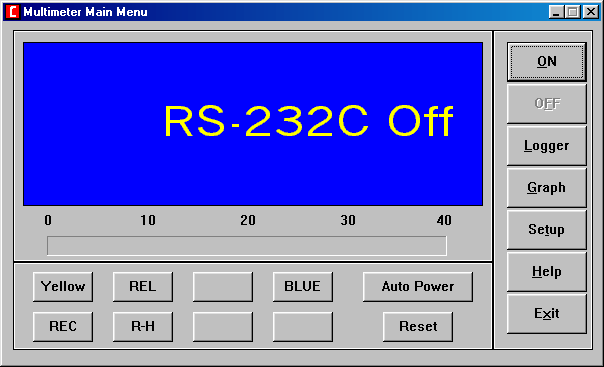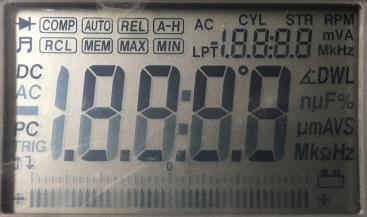


| Function |
Range |
Resolution |
Accuracy |
| DC mV |
400mV |
100µV |
±0.3% reading + 2 digits |
| DC Volts |
4 40 400 100V |
1mV 10mV 100mV 1V |
±0.3% reading + 2 digits ±0.5% reading + 2 digits |
| AC Volts 40-100 Hz (not TRMS!) |
4V 40V 400V 750V |
1 mV 10mV 100mV 1V |
±0.8% reading + 3 digits ±1.2% reading + 5 digits |
| DC Current |
400µA 4000µA 40mA 400mA 4A 20A |
0.1µA 1µA 10µA 100µA 1mA 10mA |
±0.5% reading + 2 digits ±1.0% reading + 5 digits |
| AC Current 40-100 Hz (not TRMS!) |
400µA 4000µA 40mA 400mA 4A 20A |
0.1µA 1µA 10µA 100µA 1mA 10mA |
±0.8% reading + 2 digits ±1.5% reading + 10 digits (!) |
| Resistance |
400Ω 4kΩ 40kΩ 400kΩ 4MΩ 40MΩ |
0.1Ω 1Ω 10Ω 100Ω 1kΩ 10kΩ |
±0.8% reading + 2 digits ±0.5% reading + 2 digits ±1.0% reading + 10 digits |
| Capacitance |
100nf to 100µF 100µF to 400µF |
10pF 1µF |
+3.0% reading + 10 digits (!) +5.0% reading + 10 digits (!) |
| Temperature |
-40°F to 1999°F - or - -40°C to 1000°C |
1°F* 1°C* |
±3.0% reading + 5 digits |
| Frequency |
40 Hz to 1 kHz 1 kHz to 2 MHz |
1 Hz |
±1.0% reading + 5 digits ±0.3% reading + 3 digits (!) |

